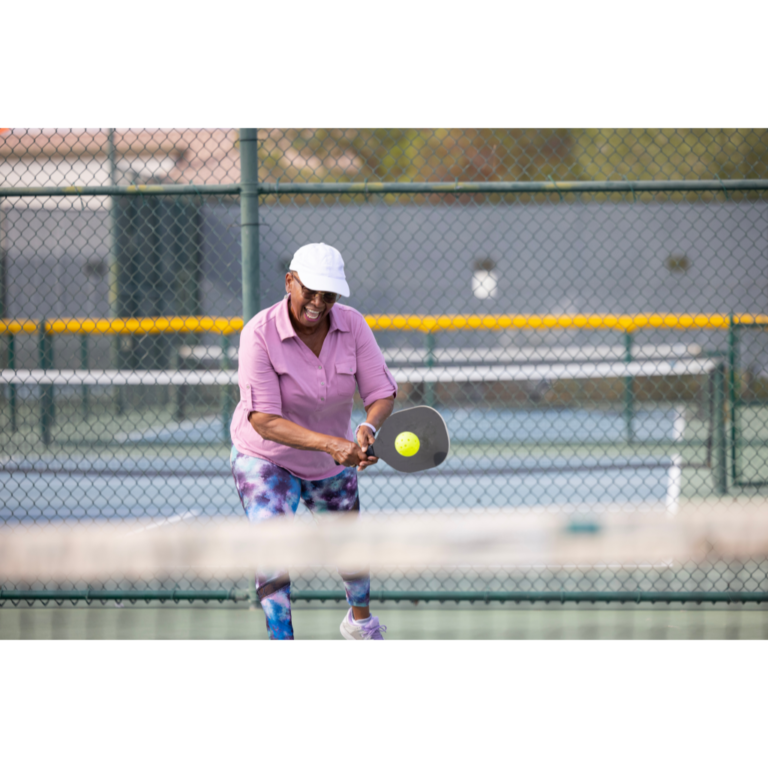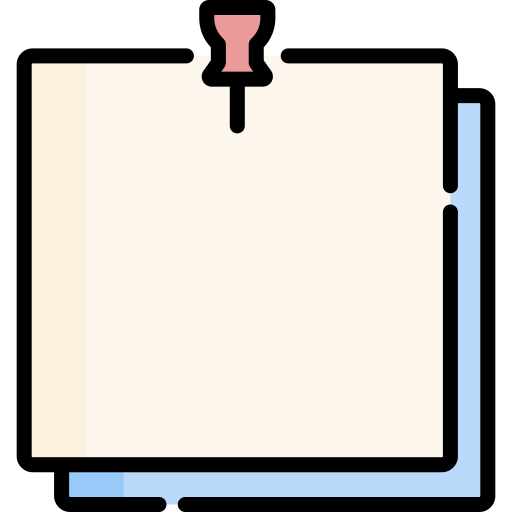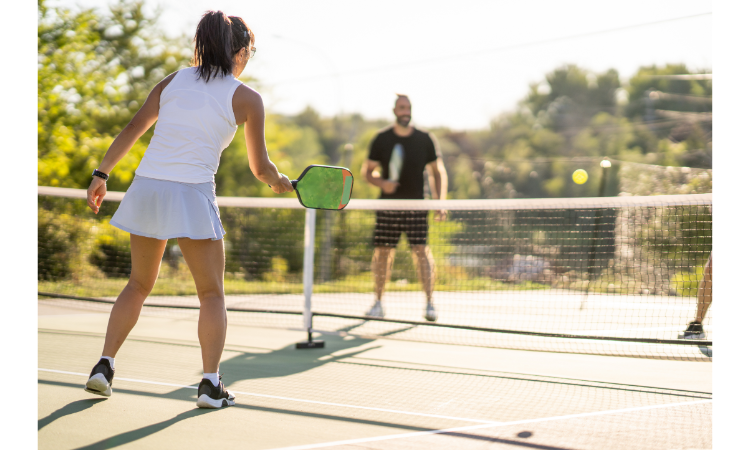Pickleball is easy to pick up and hard to master, or so they say. It’s tough to master because there are many pickleball-hitting techniques to learn. Still, this fact also makes pickleball addicting because you can improve as you progress in skill.
Pickleball is easy to get out there and play with your friends because it’s played with a slow-bouncing, slow-moving wiffle ball. And the paddles are much larger than ping pong paddles and don’t have any strings like you’d see on a tennis racket. The court is also a fourth of the size of a tennis court.
Why Is It Important to Master Pickleball Hitting Techniques?
Pickleball is a game of precision. As I mentioned earlier, the court is a fourth of the size of a tennis court, so you have a smaller area to hit into. Hitting the ball in a small surface area makes pickleball more challenging, especially when playing against high-level players.
The more advanced you become, the more strategy is involved. From hitting offensive third-shot dinks and groundstroke drives to soft dinks and volley shots, you should always intentionally hit to set yourself or your partner up to win the rally. And the best way to do that is by hitting low, unattackable balls, which require accuracy.
Grip and Paddle Positioning: Laying the Groundwork for Proper Pickleball Strokes
Before understanding the specific pickleball hitting techniques of each stroke, let’s discuss the basic setup or “ready position.”
A pickleball grip refers to how you hold your paddle during your stroke. The most commonly used grips are the continental and eastern grips. But players can also semi-western or western grips, depending on the shot and how comfortable they are with switching grips throughout a point.
Here’s a short description of how each of these grips is done:
1. Continental grip
Place your hand on the handle so that the knuckle of your index finger is on the slanted edge of the paddle. This grip is best for control and versatility.
2. Eastern grip
Place your hand on the handle so that the knuckle of your index finger is aligned with the bottom of the paddle’s face. This grip is best for power.
3. Semi-western grip
Place your hand on the handle so that the knuckle on your index finger is angled slightly toward the top of the paddle’s face. This grip is best for topspin and control.
4. Western grip
Place your hand on the handle so that the knuckle of your index finger is at the top of the paddle’s face. This is a more extreme grip for maximum topspin.
During ready position—which is the time during a rally before you hit your stroke—you should hold your grip lightly but tight enough to where it’s stable. Having a light grip helps you stay relaxed and ready to place your hand in the correct grip position, depending on what stroke you need to hit.
For right-handed players, your right hand should be at the butt of the paddle, and your left should be either on top of the right hand or at the neck of the paddle. This ensures you’re ready to hit a two-handed backhand groundstroke, volley, or dink.
Keep your paddle slightly in front of you, positioned at waist level. The top edge of your paddle should be angled upward and tilted toward you. This position keeps your arms relaxed but ready to hit a block, forehand, or backhand stroke.
The opposite is true for left-handed players. Place your left hand at the butt of the paddle and your right hand directly on top or at the neck of the paddle.
What Is the Proper Technique for Hitting a Groundstroke?
A groundstroke is a forehand or backhand drive shot that you hit off the bounce. Most players hit a groundstroke when they are behind or near the baseline, on return of serves, third, fifth, seventh (etc.) shot drives, or at the kitchen line when the ball bounces above the net height.
Look at this step-by-step guide on how to hit a forehand and backhand groundstroke.
1. Hold Your Paddle at Waist-Level, out In Front of Your Body, with A Neutral Grip.
This position gives you the fastest chance to set up for a forehand or backhand groundstroke.
2. Split-Step as Your Opponent Hits the Ball.
A split step is a slight hop that signals to your body that you’re about to take off to the ball laterally, diagonally, forward, or backward. The split step also helps you get in a grounded, low position as you move toward the ball.
3. Turn Your Shoulders, Switch Your Grip, and Move to the Ball.
If you’re hitting a forehand, pivot your body to the right. I like to turn my shoulders enough to where my left shoulder is facing the net. The shoulder turn gives me enough momentum to hit drive shots out in front while disguising the direction of where I am going to hit the ball.
As you turn your shoulders, simultaneously switch your grip on the right hand to a semi-western or western position. This grip helps keep your paddle face square to the net when you contact the ball out in front of you.
Move your body to the ball, keeping a comfortable distance to create side space to contact the ball out in front but slightly to the side of you.
Repeat the same steps for the backhand, except turn your shoulders to the left and keep your right hand on the continental or eastern grip. For better support, place your left hand on the paddle handle just above your right hand.
4. Drop Your Paddle below the Ball and Brush up and Forward on Contact.
Keeping your paddle below the ball before you hit allows you to brush up on the ball, creating a topspin shot. Topspin helps you maintain control, lifts the ball over the net, and spins downward faster than a shot hit with no spin.
5. Follow Through Your Shot with the Paddle Going Across Your Body.
The follow-through is one of the most essential pieces to the groundstroke. It creates forward momentum, giving you more power on the ball.
Many players stop their swing after contact because they’re nervous or too focused on pushing the ball in a specific direction. This is counterintuitive because it’s easier to lose ball control when you abruptly stop the path of your swing. Why? The grip can become loose on contact, or the ball can spring off your paddle with no spin.
The follow-through maintains the path of the ball you intend to hit and gives you the maximum spin and power.
What Is the Proper Pickleball Hitting Technique for Volleys?
Balls you hit out of the air behind the kitchen line (unless you’re hitting an erne or bert, in which you’d jump the kitchen line and land out of bounds) are called volley shots. Most players hit volleys while playing at the kitchen line to take time away from their opponent.
Follow the following step-by-step guide on how to hit a forehand and backhand volley.
1. Hold Your Paddle at Waist-Level, out In Front of Your Body, with A Neutral Grip.
This position gives you the fastest chance to set up for a forehand or backhand volley.
2. Split-Step as Your Opponent Hits the Ball.
When your opponent contacts the ball, split step to ground your feet in a slightly wide, athletic stance. The split step allows you to proactively position your body to the ball.
3. Lean to the Left or Right, Depending on Where the Ball Is.
If you’re hitting a forehand volley, move laterally to the right and place most of your weight on your right foot. This is called loading. Loading your weight on your right foot keeps you stable and low and helps you transition back to the middle after you hit the volley.
If you’re hitting a backhand volley, move laterally to the left and place most of your weight on your left foot.
4. Contact the Ball in Front of Your Body.
Depending on the height of the ball, you should always make contact in front of your body.
- If you make contact with the ball below the net, stay low and, with a light grip, lift the ball and aim to land it in the kitchen. Be sure to have little to no backswing.
- You have more choices if you make contact with the ball at net height. You can take a short backswing and hit a mini forehand groundstroke to speed up the ball at your opponent’s body. Or you can hit a volley dink with a soft grip, landing the ball at your opponent’s feet.
- You can hit an attacking volley if you contact the ball above the net. Hit the ball down at your opponent’s feet in a whipping motion.
What Is the Proper Pickleball Hitting Technique for Dink Shots?
A dink is a neutral shot hit from the kitchen line. The goal is to land the ball back in your opponent’s kitchen or near the kitchen line. It resembles a tennis drop shot because you’re lightly hitting the ball in the kitchen.
At the 3.5+ level, the majority of shots should be dinks. The best dink shots travel close to the top of the net, so these shots require precision, skill, and focus. The goal is to dink low to your opponent and wait until they hit a high ball. Then, you volley the ball towards your opponent’s feet, giving them less opportunity to counter. This gives you a greater chance of winning a point.
Here’s a step-by-step guide on how to hit forehand and backhand dinks.
1. Hold Your Paddle at Waist-Level, with A Neutral Grip, and Chest Facing the Ball.
This position gives you the fastest chance to set up for a forehand or backhand dink. Stay athletic to keep your body stable to hit a controlled dink.
2. Split-Step and Adjust Your Body to The Ball.
Ideally, you want to contact the ball out in front. This might mean you need to step back off the kitchen line to do so.
If you move farther than two feet off the kitchen line, step forward with your right foot (forehand) or left foot (backhand) to transfer your weight and hit a push dink. Stepping forward gets you back to the kitchen line faster for the next shot.
Remember, you can step into the kitchen to hit a dink shot because you’re letting the ball bounce. Don’t forget to step back out of the no-volley zone or kitchen after you hit your dink. If you stay in the kitchen and hit the next ball out of the air (volley), you will be committing a kitchen violation and lose the rally.
3. Contact the Ball in Front and Follow Through Back to Ready Position.
With a soft grip, push the ball into the kitchen. It’s best to hit the ball away from your opponent so they have to move to the ball. It’s easier to hit a ball when there is little to no movement involved.
- For topspin shots:
Drop your paddle below the ball, brush up on the ball, and roll over the top for your follow-through. As the ball lands on the other side of the court, the ball will bounce up quicker, throwing off your opponent’s timing.
- For a slice shot:
Cut underneath the ball, leading with the paddle’s edge. Slice shots keep the ball low over the net, so it doesn’t bounce up as high when it lands on your opponent’s side of the court.
What Is the Proper Pickleball Hitting Technique for Lob Shots and Smashes?
A primary pickleball strategy is forcing your opponent to hit a high ball you can smash. Smash shots, aka smashes, are “put away” shots wherein you hit high, attackable balls downward, aiming at your opponent’s feet.
Lob shots are when you hit a ball over your opponent’s head to where they cannot hit a smash. Lobs are defensive shots because you have time to get back into position as the ball travels up and then back down. However, many players use lob shots as an offensive strategy to push their opponents back to the baseline.
Check out these tips for how to hit lobs, shots, and smashes.
1. Using a Continental Grip, Open up The Paddle Face to Hit a Lob.
Angle the paddle face upward to hit underneath the ball. This helps lift the ball high without hitting it out of bounds behind the baseline.
2. When Hitting Offensive Lobs, Choose to Lob During a Dink Rally.
Many players disguise their lobs during a dink rally at the kitchen line. A player will target one player and, on the third or fourth dink, will slightly open up the paddle face and lob over their opponent’s head to push the team back to the baseline.
A dink and a lob have similar techniques because both shots don’t require a backswing, and the paddle face is slightly open at contact.
3. In Prep for Smashes, Turn Your Body Perpendicular to The Net.
If you’re a right-handed player, your left shoulder should point to where you want the ball to land. Turning your body allows you to move laterally forward or backward safely. If your shoulders face the net as you run back to hit a high ball, you can easily lose your balance and fall.
4. Contact the Ball in Front of Your Body.
Furthermore, watch your paddle contact the ball so your head stays up. If you drop your head too soon, the weight can pull your body down, pulling the ball down and into the net.
So, What’s Next?
Now that you know the proper pickleball hitting techniques, drill, drill, drill! Get as many repetitions as possible using the correct swing to create muscle memory. Once you feel comfortable with your shots, implement them into your gameplay.





































